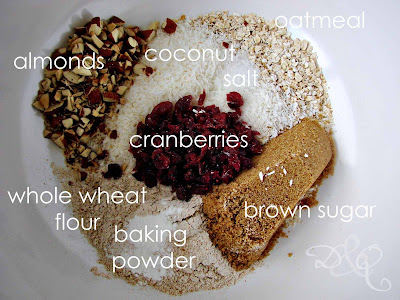If you happen to have a few hours on your hands to let the oven work it's magic, and you're in the clutches of a winter storm, I have just the antidote: baked beans.
Now, to be clear, these aren't your canned Heinz variety. And, while I'm sure they'd be very good on toast, they're even better paired with a spicy sausage, cornbread and some coleslaw. Yes, the flavour profile is the same (molasses, tomato, bacon) as those canned, but these taste infinite better and the consistency of the bean is toothsome and not mushy at all, because you'll be using dried beans.
Wait a minute, I can practically hear you saying through my computer screen,
did you say dried beans? Don't beans require soaking time?
Good news, my friends, use a small bean (I used navy beans) and you can just dump them in to the pot. The great advantage to this is they cook in the flavoured liquid, which means they're infused inside and out with sweet, smoky goodness.
I adapted this recipe from a vegetarian version by Mark Bittman. He uses konbu (seaweed) to tenderize the beans and add some of that earthy flavour that the traditional version gets from bacon.
Since I had the bacon (and since it was the good stuff), I decided to use it. I mean, I have the konbu too... but in a competition of bacon vs seaweed, I'm going to declare bacon the winner.
You know what the best part of this is? It's just so darned simple. There are very, very few ingredients.
 |
| missing: molasses, salt and pepper |
Few ingredients = easy prep. And we all love easy prep, don't we? Once this is in the oven, there's very little left for you to do other than to stir it and check on the water levels.
Baked Beans
(adapted from Mark Bittman's How to Cook Everything Vegetarian
)
Ingredients
½ lb slab bacon, chopped
½ -1 tbsp canola oil
2 medium onions, chopped
¼ cup tomato paste
6 cups water
¼ cup molasses
2 tsp mustard powder
1 lb small dried beans (like navy)
2 tsp salt
pepper to taste
(optional: a minced chipotle in adobo sauce, or replace with molasses with maple syrup and throw a chopped apple in)
Directions
1. Preheat oven to 300º.
2.. In a dutch oven placed over medium heat, cook bacon until fat is rendered, about 7 minutes. Remove bacon with a slotted spoon and set aside. Add enough canola oil to the fat in the pan to make 3 tbsp oil total. It's possible you won't need to add any extra at all or may have to remove some fat.
Bacon fat. It's flavour country.
3. Add onions to the fat and sauté until softened and just beginning to turn brown, about 5 minutes more.
Stir in tomato paste, and cook for about 1 minute, stirring to pick up all the brown goodness at the bottom of the pan.
 |
| tomato paste in a tube, where have you been all my life? |
Stir in water, molasses, mustard powder and beans (
do not add the salt yet, this will result in a tough bean).
Cover dutch oven with lid and place in the oven for 1 hour.
4. Check on beans after the first hour in the oven. Stir and check on water level. They should still be covered by an inch or so of liquid. If they aren't, add some more water. Return to oven for another hour.
 |
| not cooked yet! |
5. After they've spent two hours in the oven, stir the beans again and check on the liquid level. Cover and bake for an additional hour, stirring and checking the liquid level every 30 minutes or so. The beans should become tender between hours 2 and 3 in the oven. It took mine closer to the 3 hour mark.
 |
| Beans are plumping up nicely. |
6. Once the beans are tender, remove the lid from the dutch oven and crank the heat up to 400º. Stir in salt and pepper. If you want to add more mustard or molasses, feel free to do that here too. You want to reduce all that liquid now, so return the pot to the oven and let cook for about 30 minutes more, or until the sauce is thick.
 |
| Perfectly thick sauce and tender beans |
Like just about all things that are slow cooked, these are much better the following day. If you want to be really authentic about the whole deal, make some
steamed brown bread.























































